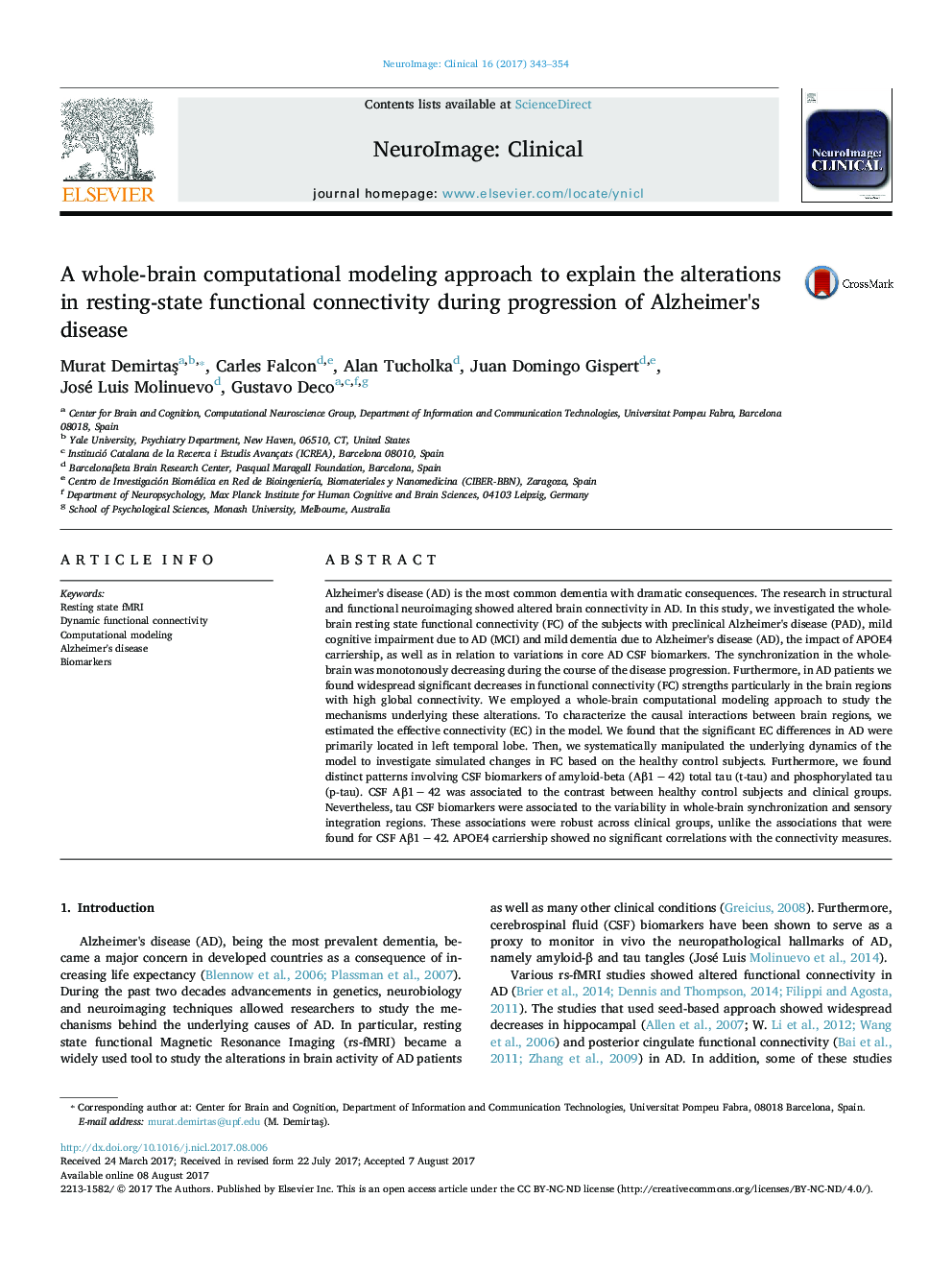| کد مقاله | کد نشریه | سال انتشار | مقاله انگلیسی | نسخه تمام متن |
|---|---|---|---|---|
| 8688241 | 1580951 | 2017 | 12 صفحه PDF | دانلود رایگان |
عنوان انگلیسی مقاله ISI
A whole-brain computational modeling approach to explain the alterations in resting-state functional connectivity during progression of Alzheimer's disease
ترجمه فارسی عنوان
یک رویکرد مدل سازی محاسباتی کل مغز برای توضیح تغییرات در حالت اتصال حالت عملکرد حالت استراحت در طول پیشرفت بیماری آلزایمر
دانلود مقاله + سفارش ترجمه
دانلود مقاله ISI انگلیسی
رایگان برای ایرانیان
کلمات کلیدی
موضوعات مرتبط
علوم زیستی و بیوفناوری
علم عصب شناسی
روانپزشکی بیولوژیکی
چکیده انگلیسی
Alzheimer's disease (AD) is the most common dementia with dramatic consequences. The research in structural and functional neuroimaging showed altered brain connectivity in AD. In this study, we investigated the whole-brain resting state functional connectivity (FC) of the subjects with preclinical Alzheimer's disease (PAD), mild cognitive impairment due to AD (MCI) and mild dementia due to Alzheimer's disease (AD), the impact of APOE4 carriership, as well as in relation to variations in core AD CSF biomarkers. The synchronization in the whole-brain was monotonously decreasing during the course of the disease progression. Furthermore, in AD patients we found widespread significant decreases in functional connectivity (FC) strengths particularly in the brain regions with high global connectivity. We employed a whole-brain computational modeling approach to study the mechanisms underlying these alterations. To characterize the causal interactions between brain regions, we estimated the effective connectivity (EC) in the model. We found that the significant EC differences in AD were primarily located in left temporal lobe. Then, we systematically manipulated the underlying dynamics of the model to investigate simulated changes in FC based on the healthy control subjects. Furthermore, we found distinct patterns involving CSF biomarkers of amyloid-beta (Aβ1 â 42) total tau (t-tau) and phosphorylated tau (p-tau). CSF Aβ1 â 42 was associated to the contrast between healthy control subjects and clinical groups. Nevertheless, tau CSF biomarkers were associated to the variability in whole-brain synchronization and sensory integration regions. These associations were robust across clinical groups, unlike the associations that were found for CSF Aβ1 â 42. APOE4 carriership showed no significant correlations with the connectivity measures.
ناشر
Database: Elsevier - ScienceDirect (ساینس دایرکت)
Journal: NeuroImage: Clinical - Volume 16, 2017, Pages 343-354
Journal: NeuroImage: Clinical - Volume 16, 2017, Pages 343-354
نویسندگان
Murat DemirtaÅ, Carles Falcon, Alan Tucholka, Juan Domingo Gispert, José Luis Molinuevo, Gustavo Deco,
